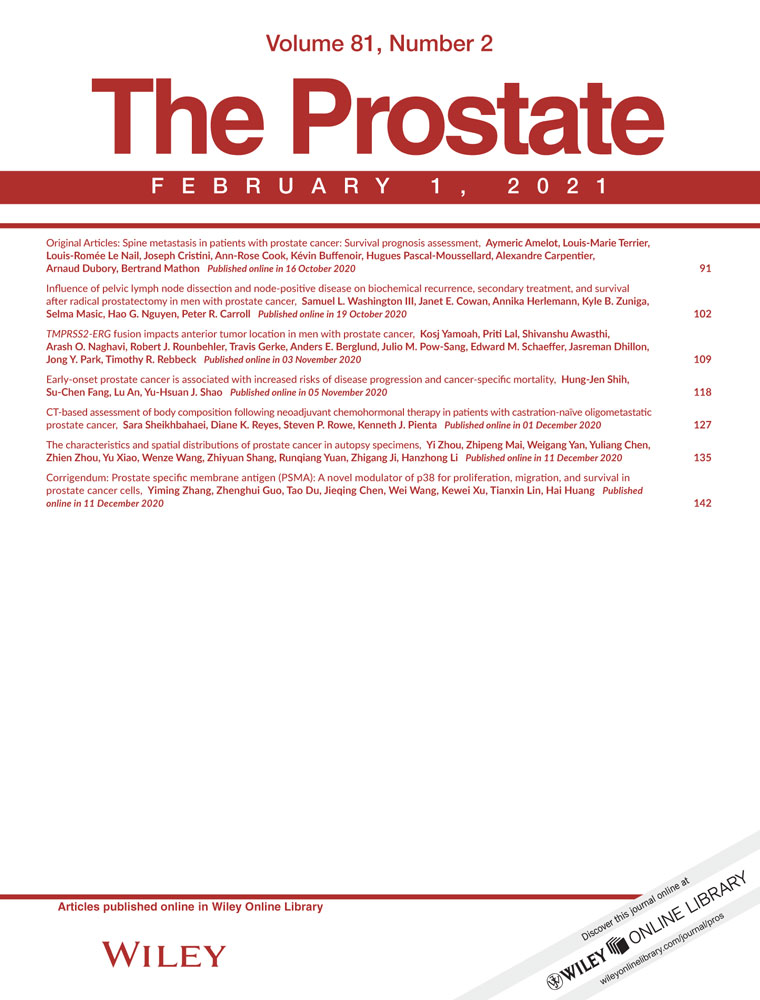TMPRSS2-ERG fusion impacts anterior tumor location in men with prostate cancer
Abstract
Background
In prostate cancer (PCa), lack of androgen receptor (AR) regulated TMPRSS2-ETS-related gene (ERG) gene fusion (ERGnegative) status has been associated with African American race; however, the implications of ERG status for the location of dominant tumors within the prostate remains understudied.
Methods
An African American-enriched multiinstitutional cohort of 726 PCa patients consisting of both African American men (AAM; n = 254) and European American men (EAM; n = 472) was used in the analyses. Methods of categorical analysis were used. Messenger RNA (mRNA) expression differences between anterior and posterior tumor lesions were analyzed using Wilcoxon rank-sum tests with multiple comparison corrections.
Results
Anti-ERG immunohistochemistry staining showed that the association between ERG status and anterior tumors is independent of race and is consistently robust for both AAM (ERGnegative 81.4% vs. ERGpositive 18.6%; p = .005) and EAM (ERGnegative 60.4% vs. ERGpositive 39.6%; p < .001). In a multivariable model, anterior tumors were more likely to be IHC-ERGnegative (odds ratio [OR]: 3.20; 95% confidence interval [CI]: 2.14–4.78; p < .001). IHC-ERGnegative were also more likely to have high-grade tumors (OR: 1.73; 95% CI: 1.06–2.82; p = .02). In the exploratory genomic analysis, mRNA expression of location-dependent genes is highly influenced by ERG status and African American race. However, tumor location did not impact the expression of AR or the major canonical AR-target genes (KLK3, AMACR, and MYC).
Conclusions
ERGnegative tumor status is the strongest predictor of anterior prostate tumors, regardless of race. Furthermore, AR expression and canonical AR signaling do not impact tumor location.
CONFLICT OF INTERESTS
The authors declare that there are no conflict of interests.




